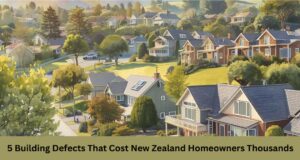The vast majority of U.S. metropolitan areas showed rising or stable home prices in the third quarter, with most experiencing modest gains compared with a year earlier, says the latest quarterly survey by the NATIONAL ASSOCIATION OF REALTORS®.
In the third quarter, 93 out of 150 metropolitan statistical areas show increases in median existing single-family home prices from a year earlier, including six areas with double-digit annual gains and another 21 metros showing increases of 6 percent or more. Fifty-four areas had price declines, and three were unchanged. Regionally, prices rose in both the Northeast and Midwest, as did the national condo price.
Lawrence Yun, NAR chief economist, says the data underscores the fact that all real estate is local. “Some metro areas are hot while others are experiencing localized problems,” he said. “The report also shows that home prices in the vast midsection of America, from the Appalachians to the Rockies, are affordable and, perhaps, even undervalued.
Yun says the quarterly metro home price report is the most meaningful long-term series available on price performance because it looks at all of the available transactions in a given area.
Unlike other home price series that are based on county records and mortgage securities, which are collected well after the actual transaction date, NAR’s information comes directly from multiple listing services. The report includes actual market prices rather than just the percentage changes so people can compare housing values around the country, Yun says.
Even with most areas showing improvement, a disruption in higher-priced sales impacted the national median existing single-family home price, which was $220,800 in the third quarter, down 2 percent from the third quarter of 2006 when the median price was $225,300.
The median is a typical market price where half of the homes sold for more and half sold for less.
Gaylord: Know Your Market
NAR President Richard Gaylord says consumers need to understand what’s going on in their own area. “There is no such thing as a national housing market – it doesn’t perform like the equities markets,” he says. “What’s really important for consumers is to make informed decisions based on individual needs, desires, and timelines in a given area. Most people plan to stay in a home for 10 years, and for buyers with a long-term view, housing is an excellent investment.”
Typical sellers purchased their home six years ago, with the median price in the third quarter of 2001 at $159,100. Despite the dip in the national median price over the past year, the median increase in value for home sellers who bought six years ago is 38.8 percent. “Nearly every market is showing positive long-term gains, with a home equity accumulation of $61,700 over the past six years for a typical U.S. home owner,” Gaylord says.
Even in most of the places that are undergoing a large price decline, long-term increases are quite respectable, he says. For example, the Sarasota area of Florida is showing a median rise in home value of $112,000 over the typical holding period, and ranks well above norm for overall gains.”
Biggest Price Gains, Biggest Drops
In the third quarter, the largest single-family home price increase was in Bismarck, N.D., area, where the median price of $161,600 rose 15.1 percent from a year ago. Next was the Salt Lake City area, at $246,700, up 14.1 percent from the third quarter of 2006, followed by Yakima, Wash., where the third quarter median price increased 13.6 percent to $163,200.
Median third-quarter metro area single-family home prices ranged from a very affordable $81,600 in the Youngstown-Warren-Boardman area of Ohio and Pennsylvania, to more than 10 times that amount in the San Jose-Sunnyvale-Santa Clara area of California, where the median price was $852,500.
The second most expensive area was San Francisco-Oakland-Fremont, at $825,400, followed by the Anaheim-Santa Ana-Irvine area (Orange County, Calif.), at $700,700.
Other affordable markets include the Saginaw-Saginaw Township North area of Michigan, with a third-quarter median price of $84,900, and Decatur, Ill., at $85,900.
Condo Market Recap
In the condo sector, metro area condominium and cooperative prices – covering changes in 59 metro areas – show the national median existing condo price was $226,900 in the third quarter, up 2 percent from $222,500 in the third quarter of 2006. Forty-one metros showed annual increases in the median condo price, including six areas with double-digit gains; 18 areas had price declines.
The strongest condo price increases were in Bismarck, N.D., where the third quarter price of $133,300 rose 22.3 percent from a year earlier, followed by the Austin-Round Rock area of Texas, at $171,700, up 19.2 percent, and the Portland-Vancouver-Beaverton area of Oregon and Washington, where the median condo price of $210,200 rose 14.9 percent from the third quarter of 2006.
Metro area median existing-condo prices in the third quarter ranged from $114,000 in the Rochester, N.Y., area, to $663,700 in the San Francisco-Oakland-Fremont area. The second most expensive condo market reported was Los Angeles-Long Beach-Santa Ana, at $388,800, followed by the San Diego-Carlsbad-San Marcos area at $351,900.
Other affordable condo markets include Wichita, Kan., at $117,100 in the third quarter, and the Cincinnati-Middletown area of Ohio, Kentucky and Indiana at $117,500.
Sales Pace: State by State
Total state existing-home sales, including single-family and condo, were at a seasonally adjusted annual rate of 5.42 million units in the third quarter, down 13.7 percent from a 6.29 million-unit pace in the third quarter of 2006. “The housing market correction is clearly focused on transaction volume and not in home prices,” Yun notes.
According to Freddie Mac, the national average commitment rate on a 30-year conventional fixed-rate mortgage was 6.55 percent in the third quarter, up from 6.37 percent in the second quarter; the rate was 6.56 percent in the third quarter of 2006. Last week, Freddie Mac reported the 30-year fixed rate was down to 6.24 percent.
Only two states showed annual gains in existing-home sales from the third quarter of 2006, while complete data for two states were not available. In North Dakota, the level of third-quarter sales rose 2.9 percent from a year ago, while Vermont increased 0.8 percent. “The biggest decline in sales appears to be concentrated in areas that had significant levels of speculative investment, including Nevada, Florida and Arizona,” Yun said.
Regional Price Trends
Northeast: The median existing single-family home price in the Northeast rose 3.2 percent to $286,300 in the third quarter from the same period 2006. Total existing-home sales in the region declined 7.3 percent to an annual pace of 973,000 units in the third quarter from the same period a year ago.
The strongest price increase in the Northeast was in the Binghamton, N.Y., area, at $119,600, up 11.4 percent from the third quarter of last year, followed by Reading, Penn., with a median price of $162,900, up 7.0 percent, and Atlantic City, N.J., at $273,100, up 6.2 percent.
Midwest: The median existing single-family home price increased 0.5 percent to $170,800 in the third quarter from the same period in 2006. Overall, existing-home sales in the Midwest fell 10.8 percent to a 1.27 million-unit annual level in the third quarter compared with a year ago.
After Bismarck, N.D., the strongest metro price increase in the Midwest was in the Green Bay, Wis., area, where the median price of $162,900 was 7.2 percent higher than a year ago. Next was Akron, Ohio, at $124,700, up 6.9 percent from the third quarter of 2006, and Gary-Hammond, Ind., at $144,300, up 6.7 percent.
South: The median existing single-family home price in the South was $180,800 in the third quarter, which is 3.6 percent below a year earlier. Total existing-home sales in the region were at an annual rate of 2.16 million units in the third quarter, down 14.3 percent from the third quarter of 2006.
The strongest price increase in the South was in the Charlotte-Gastonia-Concord area of North Carolina and South Carolina, at $220,100, up 11.0 percent from a year ago, followed by the Beaumont-Port Arthur area of Texas, with a 10.2 percent gain to $129,100, and Corpus Christi, Texas, at $140,500, up 7.6 percent.
West: The median existing single-family home price in the West was $338,100 in the third quarter, down 3.8 percent from a year ago. The existing-home sales pace in the West of 1.01 million units fell 21.5 percent from the third quarter of 2006.
After Salt Lake City and Yakima, the strongest metro price increase in the West was in the San Jose-Sunnyvale-Santa Clara area, which increased 9.4 percent from a year ago, followed by the San Francisco-Oakland-Freemont area, up 8.6 percent from the third quarter of 2006.












